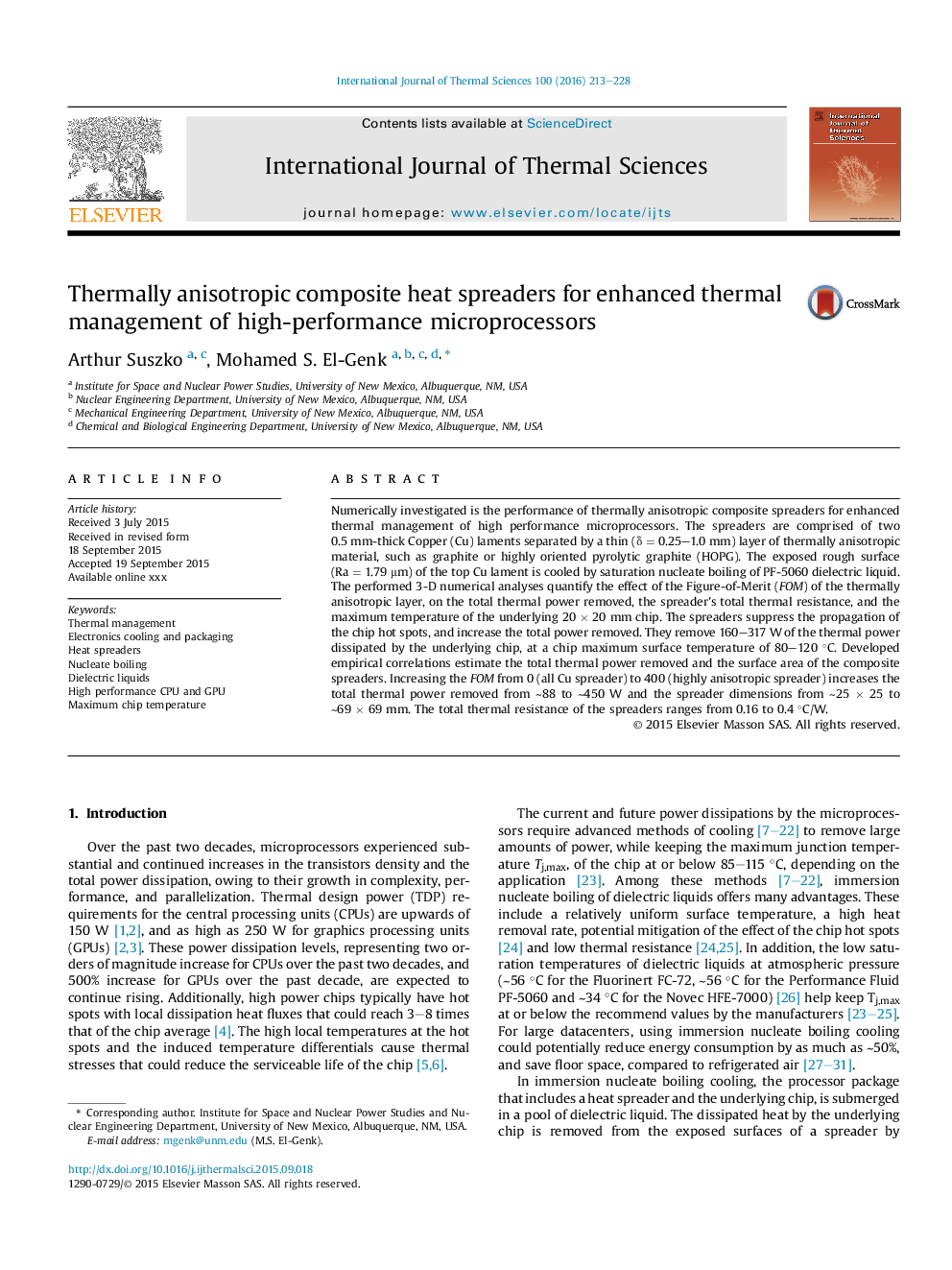| Article ID | Journal | Published Year | Pages | File Type |
|---|---|---|---|---|
| 669085 | International Journal of Thermal Sciences | 2016 | 16 Pages |
Abstract
Numerically investigated is the performance of thermally anisotropic composite spreaders for enhanced thermal management of high performance microprocessors. The spreaders are comprised of two 0.5 mm-thick Copper (Cu) laments separated by a thin (δ = 0.25-1.0 mm) layer of thermally anisotropic material, such as graphite or highly oriented pyrolytic graphite (HOPG). The exposed rough surface (Ra = 1.79 μm) of the top Cu lament is cooled by saturation nucleate boiling of PF-5060 dielectric liquid. The performed 3-D numerical analyses quantify the effect of the Figure-of-Merit (FOM) of the thermally anisotropic layer, on the total thermal power removed, the spreader's total thermal resistance, and the maximum temperature of the underlying 20 Ã 20 mm chip. The spreaders suppress the propagation of the chip hot spots, and increase the total power removed. They remove 160-317 W of the thermal power dissipated by the underlying chip, at a chip maximum surface temperature of 80-120 °C. Developed empirical correlations estimate the total thermal power removed and the surface area of the composite spreaders. Increasing the FOM from 0 (all Cu spreader) to 400 (highly anisotropic spreader) increases the total thermal power removed from â¼88 to â¼450 W and the spreader dimensions from â¼25 Ã 25 to â¼69 Ã 69 mm. The total thermal resistance of the spreaders ranges from 0.16 to 0.4 °C/W.
Related Topics
Physical Sciences and Engineering
Chemical Engineering
Fluid Flow and Transfer Processes
Authors
Arthur Suszko, Mohamed S. El-Genk,
